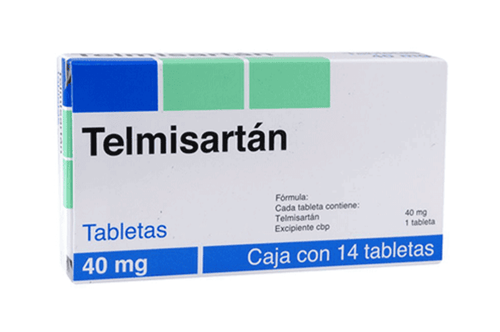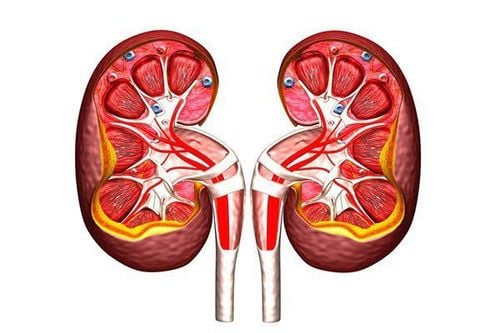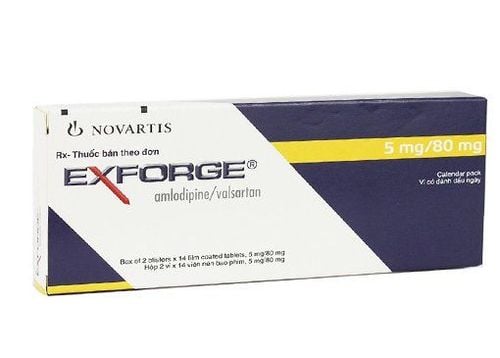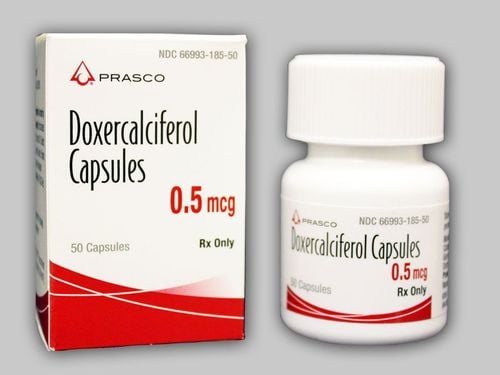This is an automatically translated article.
Enalapril is on the World Health Organization's list of essential medicines. This is an ACE inhibitor used to treat high blood pressure, diabetic kidney disease, and heart failure.
1. What is Pasapil?
Pasapil contains the main ingredient is Enalapril maleate, which is indicated for use in the treatment of diseases such as:
Hypertension caused by kidney disease. Symptoms of high blood pressure and accompanying diabetes. Essential hypertension. Degrees of heart failure: The drug works to slow down the development of heart failure, improve survival, reduce the number of heart attacks. Used in the treatment and prevention of congestive heart failure. Prevention of ventricular dilatation after myocardial infarction.
2. Dosage and usage
How to use: Pasapil can be used before or after meals because food does not affect the body's ability to absorb the drug. Take 1 to 2 doses per day.
Dosage:
The usual daily dose is from 10 to 40 mg, used once a day or can be divided into 2 times. The maximum dose is 40 mg/day. When starting treatment, patients should start from the lowest dose because symptoms can cause hypotension. Note, patients should not take Pasapil with diuretics at the same time.
In the treatment of primary hypertension: Apply a starting dose of 5mg, the time after which the dose can be increased depending on the progression of the disease, the maintenance dose is determined after 2-4 week of treatment.
In the case of patients with renal failure: It is necessary to adjust the dose according to the level of creatinine clearance, specifically:
Creatinine clearance 30 - 80ml/min, the dose can be used 5-10mg/ day. Creatinine clearance 10-30ml/min, dosage 2.5-5mg/day. Dosage applied to patients with heart failure: Initially, the starting dose should be 2.5mg, which can be gradually increased to the therapeutic dose. However, the process of increasing the dose of the drug requires careful monitoring.
3. Side effects of the drug Pasapil
At therapeutic doses, Pasapil is well tolerated. However, during the use of Pasapil, patients may still experience the following side effects:
Affects lymphatic system disorders and blood disorders with symptoms such as: Decrease in haematocrit, neutropenia , pancytopenia, thrombocytopenia, bone marrow suppression, risk of lymphoma, autoimmune disease, and decreased hemoglobin. Effects on the nervous and mental systems with common manifestations such as headache, depression, confusion, drowsiness, insomnia, irritability, paresthesias, dizziness and sleep disturbances. Causing nutritional disorders and affecting metabolism with the most obvious symptom is hypoglycemia. Cardiovascular effects with manifestations such as cerebrovascular accident, angina pectoris, hypotension, dizziness, syncope, myocardial infarction, tachycardia, chest tightness, arrhythmia, palpitations and Raynaud's statue. Effects on the respiratory system: Common symptoms include rhinorrhea, allergic alveolitis, cough, dyspnea, throat swelling, hoarseness, bronchospasm, pulmonary infiltrates, rhinitis, pneumonia, and eosinophilia. eosin. Hepatobiliary disorders: Liver failure, hepatitis and cholestasis. Affects the digestive system with manifestations including diarrhea, taste changes, nausea, abdominal pain, intestinal obstruction, pancreatitis, dyspepsia, constipation, loss of appetite, stomach irritation, dry mouth , stomach ulcers, mouth sores, aphthous and glottis. Subcutaneous tissue disorders: With common manifestations such as rash, skin rash, angioedema, pruritus, urticaria, alopecia, Stevens-Johnson syndrome, exfoliative eczema, toxic epidermolysis and pemphigoid erythema. Other reactions include weakness, fatigue, cramps, flushing, ringing in the ears, dizziness and fever. Affects the results of some tests such as increased plasma creatinine, hyperkalemia, uremia, hypernatremia, elevated liver enzymes and increased plasma bilirubin. If you experience these symptoms, the patient should stop using Pasapil and notify the doctor for appropriate treatment.
4. Caution
For patients with high blood pressure when taking Pasapil medicine may experience hypotensive reactions. Therefore, when this symptom occurs, the patient should reduce the dose of the drug and notify the doctor. Enalapril should not be used in patients with a history of cardiogenic shock and hemodynamic obstruction. In patients with renal impairment, the starting dose should be adjusted according to creatinine clearance. Regular monitoring of potassium and creatinine levels in the body is recommended. When using the drug with patients with bilateral renal artery stenosis or unilateral artery stenosis, there is a high possibility of unwanted reactions such as hypotension and possible renal failure. Concomitant use of ACE inhibitors with Pasapil may result in neutropenia, thrombocytopenia, agranulocytosis and anemia. Medicines containing enalapril should be used with caution in patients with collagen vascular disease, immunosuppressive therapy, and treatment with allopurinol or procainamide. Patients on high-velocity membrane dialysis and on treatment with ACE inhibitors may experience anaphylaxis. In cases of diabetes treated with oral antidiabetic drugs or taking insulin, blood glucose levels should be controlled during the initial period of ACE inhibitor therapy. For pregnant women: There is some evidence that Pasapil will affect the development of the fetus. Specifically, it causes damage to the kidneys of the fetus and leads to a lack of amniotic fluid. Therefore, patients are advised not to take enalapril during this time. For women who are breast-feeding: Enalapril is likely to be excreted in breast milk, so doctors recommend not to use it while breastfeeding.
5. Drug interactions
Pasapil may have an interaction reaction if used concomitantly with:
Acamprosate: The excretion of Acamprosate may be reduced when combined with Enalapri. Acebutolol: Enalapril may increase the antihypertensive activities of Acebutolol. Aceclofenac, Acemetacin: The risk or severity of kidney failure, hyperkalemia, and hypertension may be increased when these 2 drugs are combined with Enalapril. Acetylsalicylic Acid: The therapeutic efficacy of Enalapril may be reduced when used in combination with Acetylsalicylic acid. Alendronic acid: The risk or severity of myopathy, rhabdomyolysis, and myoglobinuria may be increased when Enalapril is combined with alendronic acid. Alfentanil: Alfentanil may decrease the antihypertensive activities of Enalapril. Allopurinol : The risk of a hypersensitivity reaction to Allopurinol is increased when it is combined with Enalapril. Alogliptin: The risk or severity of angioedema may be increased when Alogliptin is combined with Enalapril. Alprostadil: Alprostadil excretion may be reduced when combined with Enalapril. Ambrisentan: Enalapril may increase the antihypertensive activities of Ambrisentan. To avoid interactions, before being prescribed Pasapil, the patient should inform the doctor about the drugs they are using, including functional foods. The doctor will base on that to prescribe the appropriate Pasapil.
Above is all information about Pasapil drug, patients need to carefully read the instructions for use, consult a doctor / pharmacist before using. Absolutely do not arbitrarily buy Pasapil treatment at home because there may be unwanted side effects.













